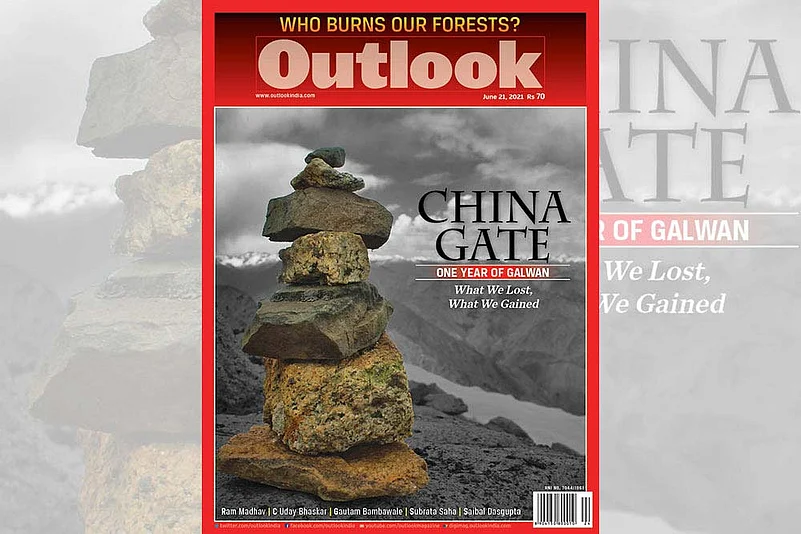A year later, Galwan will be remembered as a watershed, equation-changing moment in India-China ties. Chinese actions in Ladakh have hardened India’s stand and, considering the asymmetry in military and economic clout, has left it with little option but to greatly accelerate the pace of closeness with the US. Then there is the Quad—the US, India, Japan and Australia group that is a direct result of China’s assertive behaviour in the Indo-Pacific.
ALSO READ: Infernal Affairs
“India will have to craft a new China policy in this changed context where engagement will have to be shaped amidst strategic compulsions,” says Sujit Dutta, senior fellow at the Vivekananda International Foundation. The anti-China bloc has taken concrete shape as US-China ties take a deep downward dive. “US-China rivalry means that India has a strategic ally. The closer India gets to the US, the more integrated it is within the American system of partners and allies, the more access it has to American technology and intelligence, all of which will build India’s capabilities,” says Aparna Pande of the Washington-based Hudson institute. “Fourteen months after PLA entered Indian territory, for the fourth time in eight years, India-China border discussions are at an impasse. New Delhi still rests its hopes that rounds of high-level diplomatic and military negotiations will convince Beijing that the two can…find a compromise that gives India a face saver. Indian leaders are reluctant to admit that China’s ‘two step forward, one step back’ policy has resulted, over the years, in loss of critical territory. They are also yet to acknowledge that China plays by different rules and that India needs to up its game on multiple fronts.”
ALSO READ: Checkmate & Stalemate
The situation now can best be described as “an immobile impasse”, says Alka Acharya of JNU. “It is evident that China is in a good place.... Talks are on, so there is no fear of escalation, yet the pressure is on as India is left guessing at China’s next move. China has also sent out a strategic signal to India’s neighbours that it calls the shots and can cut India down to size,” she adds.
ALSO READ: Plateau Of Bad Faith
Bloodless intrusions along the LAC have been the norm, but the savage hand-to-hand brawl between Indian and Chinese soldiers on the mountain slopes, in which 20 Indian soldiers died, was a rude awakening. “The power equation in the region is changing,” says Datta. “The Quad is here to stay. India is moving closer to the US. India’s own capacity is being built up—defence forces are being upgraded, border infrastructure being ramped up. Within a couple of years, we will be in a much stronger position militarily.”

Former diplomat Punchok Stobdan brings in a broader philosophical view. “Diplomacy is the art of compromise,” he says. “Somehow, the notion of compromise in modern India is viewed negatively and associated with weakness and defeat. Maybe this has something to do with Partition.” But, as he points out, “in the past, compromise, flexibility and adaptability were viewed as integral parts of Indian philosophical tradition”.
ALSO READ: ‘This Apathy Breaks My Heart’
Stobdan calls for India and China to work out a compromise in true Asian style. “A real attempt at trust-building has not yet begun. Currently, we are at a crossroads. I think it is time to seek major strategic compromise from both sides. It is a challenge not just for Indian diplomacy, but also for Indian civilisation,’’ the former envoy says.
ALSO READ
















